On this week's Naked Scientists, We look at ways to tackle the problem of climate change - including capturing carbon at sea, trapping carbon dioxide in coal to release a useful fuel, and a way to turn co2 to stone, with the help of old lava floes! Also, we find out how silicon nano wires can be used to make super-batteries, why sneaky squirrels are faking what they do with their nuts, how the price tag on wine affects it's flavour and the parasite that makes it's ant-host resemble a piece of fruit. Plus, in Kitchen Science, we find out how a digital camera can see the signal from your TV remote!
In this episode
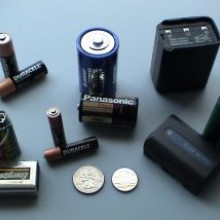
Mega-cell: Researchers build better batteries
US scientists have come up with a way to make lithium batteries last ten times longer, which means a laptop could last all day on just one charge.
 Stanford's Yi Cui and his colleagues made the breakthrough by using a forest of tiny silicon nanowires, which act as the positive electrode (known as the anode) inside the battery. The present generation of batteries use graphite electrodes, which can only hold a certain amount of lithium, and this limits battery capacity. But silicon has a much higher charge capacity, so using it should enable scientists to build better batteries, but there's a catch. When silicon soaks up lithium inside the battery it swells up by 400% and then shrinks again when the lithium is later released. This cycle occurs every time the battery is charged and discharged, and very quickly the silicon becomes "pulverised" into tiny fragments which lose contact with their parent electrode and cause the battery capacity to fall.
Stanford's Yi Cui and his colleagues made the breakthrough by using a forest of tiny silicon nanowires, which act as the positive electrode (known as the anode) inside the battery. The present generation of batteries use graphite electrodes, which can only hold a certain amount of lithium, and this limits battery capacity. But silicon has a much higher charge capacity, so using it should enable scientists to build better batteries, but there's a catch. When silicon soaks up lithium inside the battery it swells up by 400% and then shrinks again when the lithium is later released. This cycle occurs every time the battery is charged and discharged, and very quickly the silicon becomes "pulverised" into tiny fragments which lose contact with their parent electrode and cause the battery capacity to fall.
To get around the problem Cui and his team have used a technique called VLS, short for vapour-liquid-solid, to grow clusters of short silicon wires each about one ten-thousandth of a millimetre in diameter. When the new electrodes were tested as part of a lithium ion cell the increased surface area helped to boost the amount of charge that the battery could hold, the cells worked with over 90% efficiency, and the electrodes were also capable of handling currents five times greater than those tolerated by existing graphite electrodes. Moreover, when the team used X-rays to study the crystal structure of the silicon nanowires when they were charged and discharged, they found that the wires swelled and shrank without signs of pulverisation.
"We are working on scaling up and evaluating the cost of our technology," Cui said. Cui has filed a patent on the technology, which is published in the journal Nature Nanotechnology. He expects the battery to be commercialised and available within "several years".
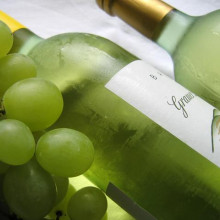
The price tag feel-good factor
I'm sure most of us are guilty of occasionally indulging in an expensive treat - whether that's a new pair or shoes or a bottle of pricey wine - because frankly a little bit of luxury makes us all feel good...
Scientists have now discovered that this definitely is the case, and that even if you think you are paying more for something when in reality you aren't, you might still get that same feel-good effect.
Studies have already shown that advertising and marketing can manipulate customers into thinking perfumes labelled as being exclusive and expensive actually smell nicer than cheaper perfumes. Now a team of researchers from the California Institute of Technology and Stanford University decided to see what is going on inside our brains when we think we are spending lots of money.
Using functional magnetic resonance imaging (fMRI), the team looked inside the brains of volunteers who were given what they were told were five different glasses of Cabernet Sauvignon wine to sip. In reality, what they were given were three wines priced at around 2 Pounds, 15 Pounds and 45 Pounds. The cheapest wine was served twice, once in its original packaging, and again but this time masquerading as a wine worth more than twenty pounds. The most expensive vintage was also served up in the guise of a five Pound bottle of plonk.
It seems that this label-swapping trick actually worked. The volunteers said that the cheaper wine tasted much nicer when they thought it was more expensive, and vice versa for the pricier wine when they thought it was cheaper.
And it turns out this price tag feel good factor also has a measurable effect on the brain. When the volunteers were sipping on wines they thought were more expensive - whether or not they actually were - there was increased activity in a part of the brain called the medial orbito-frontal cortex, which is thought to be responsible for judging the pleasantness of an experience. This part of the brain didn't light up nearly as much when they were drinking wines labelled as being cheaper.
So it seems that price can act like a sort of placebo on the human brain - because we expect things that cost more to taste better and we convince ourselves that they actually do.
Overall, it's a rather fascinating but scary insight into the human brain and how modern advertisers can manipulate us into parting with our cash...

Squirrels Faking it with their Nuts
Squirrels sequestering nuts and other nutritious morsels is a common site in autumn. But, according to US researchers, all is not what it seems - because up to 20% of the time squirrels are faking it, and their elaborate burial displays are just to put other hungry individuals off the scent.
 Writing in Animal Behaviour, Wilkes University researcher Michael Steele and his colleagues watched the antics of over 100 grey squirrels and compared how the animals' behaviour changed when the team began pilfering their cached food. The squirrels reacted to the food thefts by doubling the number of fake burial displays they performed, hiding food in locations that were much harder to raid, and also eating more of it straight away.
Writing in Animal Behaviour, Wilkes University researcher Michael Steele and his colleagues watched the antics of over 100 grey squirrels and compared how the animals' behaviour changed when the team began pilfering their cached food. The squirrels reacted to the food thefts by doubling the number of fake burial displays they performed, hiding food in locations that were much harder to raid, and also eating more of it straight away.
These results seem to suggest that squirrels might behave like western scrub jays, which also hide food and pay close attention to who is watching them as they do so. If they find themselves under scrutiny they return later and move their food caches. This has led some researchers to propose that the birds have a "theory of mind" - in other words an understanding of the intention to steal - so now it looks like squirrels fall into the same mould!
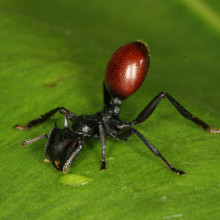
08:14 - Red Ant, Dead Ant...
Red Ant, Dead Ant...
with Steve Yanoviak, University of Arkansas at Little Rock
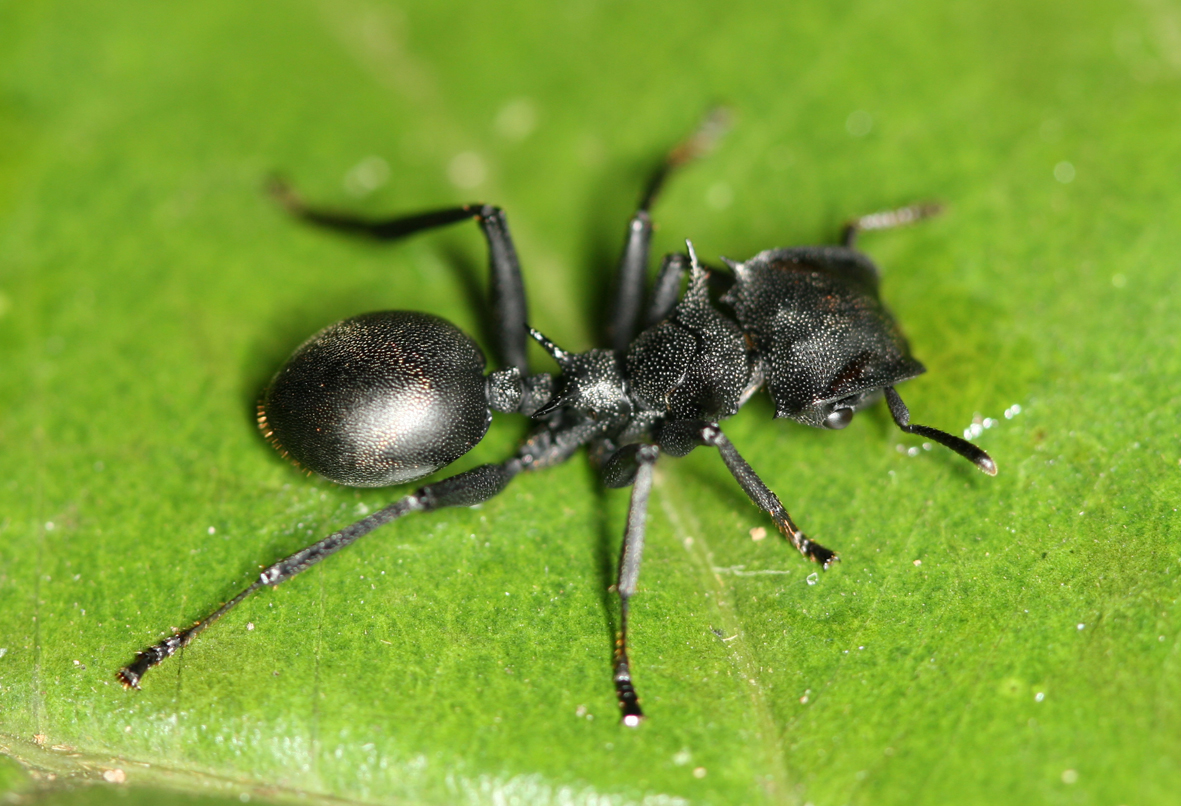 Helen - Now we're going to return to one we talked about in 2005, about ants that live in trees. This was a story by researcher Steve Yanoviak who talked to us from up high in the canopy of the Amazon rainforest where he discovered a certain species of ant that lives in trees that glide down if they fall and can clamber back up the trunk rather than having to walk across the dangerous floor of the rainforest. Now he's discovered that the same ants can also make themselves look like pieces of fruit. But not by choice, what's making them do that is a type of parasite. Steve, thanks so much for coming on the show to talk to us. What are these parasites?
Helen - Now we're going to return to one we talked about in 2005, about ants that live in trees. This was a story by researcher Steve Yanoviak who talked to us from up high in the canopy of the Amazon rainforest where he discovered a certain species of ant that lives in trees that glide down if they fall and can clamber back up the trunk rather than having to walk across the dangerous floor of the rainforest. Now he's discovered that the same ants can also make themselves look like pieces of fruit. But not by choice, what's making them do that is a type of parasite. Steve, thanks so much for coming on the show to talk to us. What are these parasites?
Steve - The parasite is called Myrmeconema neotropicum and it is a nematode parasite that infects these ants and causes their gaster or their rear end to turn bright red.
Helen - Why are they doing that? When you first saw this, what did you think?
Steve - Well, actually my colleague Robert Dudley was the first person to notice it and my other colleague, Mike Kaspari and I who worked on ants also, kind of thought that Robert probably didn't really know what he was seeing and was probably a different species of ant. Then we got it into the lab an opened it up and out poured these nematode eggs. Looking at the ant, and the way it behaved, the natural assumption was that it's somehow attracting or trying to attract another animal to transport those eggs to a new colony. The bird would be the most logical scenario.
Chris - How does the red colour get achieved?
Steve - It's actually not a pigment or something that's secreted by the nematode itself. It is, as far as we can tell, a thinning of the exoskeleton of the ant. Also possibly, the nematode is sequestering pigment compounds from the exoskeleton of the ant. Probably a combination of those two.
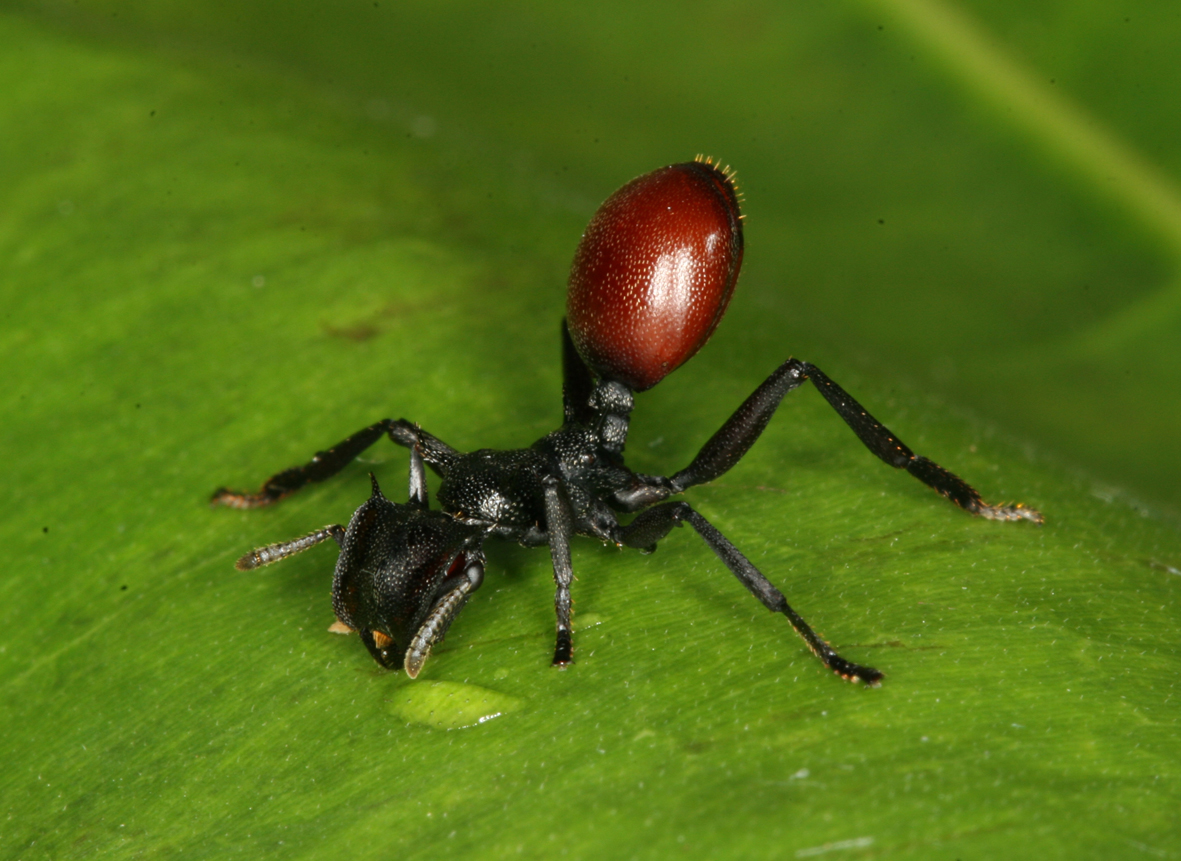 Chris - You've very kindly sent us some incredibly striking pictures. There's a nice black ant which is the healthy one and the one which is not healthy, crammed with parasites, has got a big, bright red rear end. It looks like a berry.
Chris - You've very kindly sent us some incredibly striking pictures. There's a nice black ant which is the healthy one and the one which is not healthy, crammed with parasites, has got a big, bright red rear end. It looks like a berry.
Steve - Exactly. By removing the pigment from the exoskeleton what's left behind is this amber colour. That combined with the yellowish eggs inside and a little bit of sunlight makes it appear bright red like you see there.
Helen - So why are the nematodes doing this? What are they trying to get the ants to do for them?
Steve - Well, it a mechanism for transmitting themselves. At least we hypothesise this is the case, to new ant colonies. If the nematodes were to just infect one colony and live out their entire life there without being transported to a different colony then they would essentially just go extinct. The most plausible explanation, the most parsimonious explanation for what we have here is that this is a mechanism for getting those nematode eggs to new ant colonies.
Chris - In other words, a bird would come along and eat that and by mistaking it for a piece of fruit it would normally find in the colony. How would the parasite then complete the lifecycle in getting to more ants?
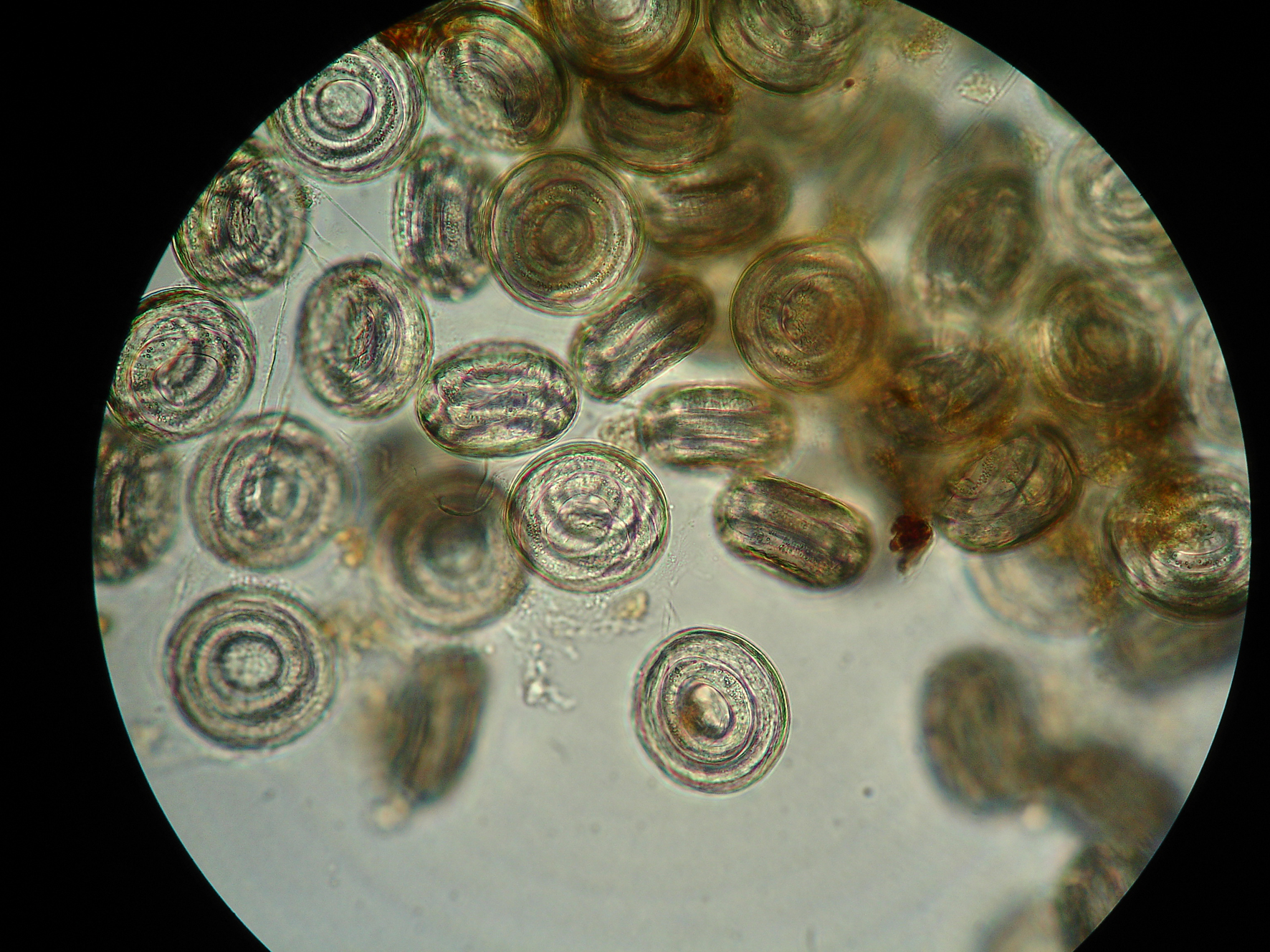 Steve - On of the neat things about this story and one of the reasons that it seems to fit well with the ant is that ants collect bird faeces very frequently. That provides a very easy mechanism for the parasite to get in to a new ant colony.
Steve - On of the neat things about this story and one of the reasons that it seems to fit well with the ant is that ants collect bird faeces very frequently. That provides a very easy mechanism for the parasite to get in to a new ant colony.
Chris - Why does it want to do that, it doesn't sound like a very nice job - the ant equivalent of a sewage worker?
Steve - Well, in the tropical forest mineral nutrients can be very scarce and so a lot of things collect bird faeces. In this case the ants are often going after solid parts of the bird faeces and so there's probably a lot of nutrient value in that in terms of undigested insect parts.
Chris - We've heard of previous examples of parasites which have been able to make one animal appear to be another animal. There's a famous example of a snail where it get infected with a parasite that makes one of its antennae look like a caterpillar so a bird will eat it. I've not heard of any previous examples of an animal being made to look like a piece of fruit.
Steve - This is the only example that we know of, at least for the insects. That kind of has to restrict it. There's a parasite that affects a plant that can make the plant look like something that it's not but this is the only example that we know of fruit mimicry in an arthropod. That's sort of a neat story.
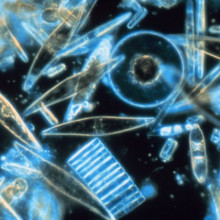
15:52 - Catching Carbon - Is the Sea Safe for Sequestration?
Catching Carbon - Is the Sea Safe for Sequestration?
with Dr Margaret Leinen, Climos & Dr Steve Vivian, CEFAS
Chris - It's hard to turn the radio or television on now and not to be told to reduce your carbon footprint or be more green and things like that. That's not the message of this show though. We want to talk about, not the problem of climate change but the solution. On the line now is Margaret Lienan. She works for Climos which is a company based in the United States. Hello, Margaret.
Margaret - Hello, how are you?
Chris - I'm very well, thank you. Your plan is to try to lock away CO2 and solve the problem of climate change by encouraging the oceans to soak up more of it. How does it work?
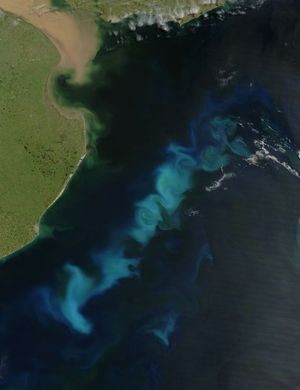 Margaret - Well, a few years ago in studying what controlled the biological productivity of the oceans scientists found that most of the open ocean far away from land was limited by iron. Iron is very insoluble so iron from rivers precipitates out close to shore. Far away from land the iron often comes from dust storms that move out far over the sea and then fall into the water. We did both experiments in the laboratory and observations at sea.
Margaret - Well, a few years ago in studying what controlled the biological productivity of the oceans scientists found that most of the open ocean far away from land was limited by iron. Iron is very insoluble so iron from rivers precipitates out close to shore. Far away from land the iron often comes from dust storms that move out far over the sea and then fall into the water. We did both experiments in the laboratory and observations at sea.
Over the last twenty years they've done a set of a dozen experiments at sea spreading fairly soluble iron (iron sulphate) to see what happened. They found in every case that there were very, very big phytoplankton blooms. Phytoplankton are the small, microscopic plants of the sea. So when phytoplankton bloom they take organic carbon out of water and CO2 from the atmosphere. Some of that organic carbon is eaten or decomposes close to the surface so nothing happens to it. Some of it sinks much deeper into the ocean where it's protected from exchange with the atmosphere. The big question is, 'how much of that is sequestered?' That's what the current round of scientific experiments that are proposed are designed to answer.
Chris - So what you're saying is that the dead bugs that fall to the bottom of the sea will end up locking away carbon in a form where it won't resurface in the atmosphere. So in that respect it's almost like turning it back into coal?
Margaret - Well, yes. The sequestration is not as long-term as turning it back into coal. It's sequestered for periods of 100-1000 years rather than up to millions of years like coal.
Chris - So what you're arguing then Margaret, this is a way of buying us time rather than solving the problem of climate change. It locks the CO2 into a position where it can't cause trouble while we sort ourselves out and get our house in order.
Margaret - That's exactly right. Not only that, it's not a silver bullet. This will not solve the CO2 problem but it can help in the same way that every other technology and approach that is being discussed can help with the problem.
Chris - It doesn't sound particularly environmentally friendly though. There must be some possible unforeseen effects of scattering large amounts of iron sulphate, that's quite acidic in itself, onto the surface of the ocean to then create a bloom or a massive growth of just one species of marine organisms. There must be knock-on effects of that.
Margaret - Several things. First of all it doesn't just stimulate one species. It stimulates a whole set of species with time. We know that both from looking at how this happens naturally. Remember all of those very large quantities of iron go out onto the ocean all the time. That's what actually stimulates the blooms. That set of questions about what are the consequences for the chemistry and biology of the ocean are very important. Of course, the first set of questions is, 'does this work, does it really sequester CO2?' Previous experiments weren't well-designed to answer that question. That suggests a new set. If it does sequester CO2 then we need to know about the consequences for chemistry and biology and what do they tell us about the limits to which this could and should be used to draw down CO2. You're obviously going to have to balance that against the problem of CO2 in the atmosphere, what it does in terms of acidification of the ocean and so forth.
Helen - Margaret, you say that previous tests weren't really conclusive as to whether or not this was going to work. Are you looking at trying to answer that question now and what are you doing to try and get to that answer?
Margaret - Our company is trying to bring private funding sources to the ocean science community to enable them to answer the questions. What they want to do is have a set of larger area experiments so that they would fertilise areas of the ocean about 100X100km. They would want to stay much longer to really observe this whole sequence of activities in the bloom rather than just say, 'oh yes, phytoplankton bloomed.' Then they also want to bring new state-of-the-art sampling here to the ocean. We then have a lot of the remotely robotic autonomous vehicles during the time that the experiments were done.
Finally, they want to do a lot more modelling to understand how long the CO2 will remain in the ocean and how soon the ocean will re-equilibrate and pull CO2 out of the atmosphere.
Chris - Climos is a company so you must have a business model. How do you expect to make money from this?
Margaret - If carbon is sequestered and that has to be demonstrated in a rigorous fashion with measurements, with external observers, with very open data then the carbon that is sequestered can be sold as carbon offsets on the voluntary market.
Chris - This seems like a good opportunity to bring in Chris Vivian. He's from CEFAS, that's the Centre for Environment, Fisheries and Aquaculture Science. I guess that makes you the oceanographic equivalent of DEFRA, Chris? How do you react to what Margaret's saying?
Chris Vivian - Hello Margaret, good to hear from you. Margaret's quite right in many respects that we still don't know enough about exactly what happens in these situations. There's a large degree of uncertainty. A lot of issues to be resolved. Some of the issues you mentioned we just don't have answers to at the moment. The experiments that Margaret was talking about should help to identify that.
Chris - What are the big worries?
 Chris Vivian - Some of the issues that have been raised are will we change the phytoplankton community in the oceans by doing repeated experiments of this type? Will we, through putting a lot of organic matter deep into the water, change the oxygen conditions there reduce the oxygen? Will we change the pH, will we create the additional other gases which may have global warming potential. Some concern has been raised with nitrous oxide.
Chris Vivian - Some of the issues that have been raised are will we change the phytoplankton community in the oceans by doing repeated experiments of this type? Will we, through putting a lot of organic matter deep into the water, change the oxygen conditions there reduce the oxygen? Will we change the pH, will we create the additional other gases which may have global warming potential. Some concern has been raised with nitrous oxide.
Chris - CO2 comes down, comes up as something even worse?
Chris Vivian - Could be nitrous oxide, or methane for example, can be generated by plankton groups. We don't know enough about those yet to understand whether they are significant. They may be, they may not be.
Chris - Let's see if Margaret can offer us any reassurance on that score. What do you think Margaret?
Margaret - Well, we totally agree with Chris [Vivian] that those are the issues. He raised some that have to do with how much CO2 you can sequester and also what the side-effects are in terms of other greenhouse gases; then those other questions about biology and chemistry. We certainly know that you do change the oxygen conditions in the ocean because that CO2 that falls deep into the ocean- I'm sorry it's not CO2, it's organic carbon that falls deep into the ocean- it is changed by combination with oxygen into bicarbonate. The question is that we need these experiments in order to answer those questions. We think that this first phase has to be very carefully designed in order to answer both the sequestration questions and the biology and chemistry questions.
Chris - So Helen, as a marine biologist, how does this sit with you? Are you worried because we've seen umpteen examples where you change once species quite dramatically and get knock-on effects with other things. We've had huge plagues of jellyfish because we've removed all the big fish that would have eaten them. So what do you think the catches of this could be?
Helen - I think you're quite right. I think, to be honest, the implications are potentially huge and we really don't understand them yet. That's the problem with the oceans, they can be so complex: the interactions between different groups of animals and plants. Predicting that's going to be really difficult. I think you could generally take an approach that you are messing with something you don't understand so why do that? Maybe because what we're going to achieve will be important enough to do that. I think we just don't know, that's the problem.
Chris - It's not very reassuring, Chris.
Chris Vivian - Well, at the moment I think it's far too early to judge whether this could be a viable mechanism to offset climate change to any degree. Certainly the estimates that have been made are that it probably could only be a relatively minor one. That's not to say lots of minor ones might not add up and be useful if they are otherwise acceptable. One could not rule it out at the moment but I think it's far too early to say that it would be a viable option right now.
Chris - What do you think a better option is if this is not going to be something which actually has legs. What should people be putting their resources into?
Chris Vivian - If we look at what's happening now in a number of countries in various parts of the world, things like carbon capture and storage in sub-geological structures is being pushed quite hard by the UK and other governments around the world because they believe there's a lot of capacity for that. Some of these things will take quite a bit of time to bring into effect. That's probably the biggest one that has the biggest capacity, we think. It will require a lot of money to get it worked up into a viable and practical option.
Helen - I know we said we weren't going to talk about problems of climate change but I just wondered maybe, Chris [Vivian], what you think about how much this really takes people's minds off the problem of creating CO2 in the first place. Does this make us feel a bit better if there's an option to mop it up then we don't have to worry about creating it in the first place?
Chris Vivian - That is certainly a concern that's been raised by NGOs in some of the international discussions. They feel there is a danger that some countries will see this is a way to avoid doing anything. It's certainly a concern. Certainly governments view it as one means of trying to help deal with the problem. We've got to, in their view, apply a portfolio of all sorts of options including the sorts of things we've talked about for energy efficiency and renewables etcetera. We need to hit it with everything really to try and address the problem.
Chris - The oceans have suffered quite badly because of the effects of global warming and they continue to do so. The models predict that they will. The oceans are going to become more acidic, for example.
Chris Vivian - You're exactly right. That is certainly probably one of the major effects of climate change that wasn't fully appreciated early on. Just that over the long term we're going to make oceans distinctly more acid so we are threatening, for example, the existence of corals in the world ocean. Possibly, in something like 100 years there will be great danger that we'll have hardly any corals left in surface waters because the oceans will be too acidic.
Chris - Margaret, when do you see the strategy for getting this tested and then perhaps into a phase when you're selling carbon credits by seeding the ocean in the way you describe?
Margaret - I think that we're planning for the first experiment that we will give funding to the oceanographic community to do, probably in about a year. I anticipate that we're probably looking at a period of a few years. Three to five years of experimentation to answer the questions that you've raised and that Chris has raised; to see whether this technique is effective and if so to what degree should it be used. I think that one of the very attractive things about it is that it does actually remove CO2 from the atmosphere, not just limit emissions. Chris [Smith] raised the issue of acidification and it's a very serious one. We're stuck with that so long as there is all of this excess CO2 in the atmosphere. Again, this technique wouldn't remove all of it but it could help.
Chris - Chris?
Chris Vivian - Yes, indeed. I think that's probably correct and certainly there's a recent publication in the journal Science, by sixteen leading scientists in this area of ocean iron fertilisation have identified a series of issues that need to be addressed before we think it can be justifiable if they were resolved satisfactorily. It would seem to be that they are going to take a significant amount of time to resolve. I couldn't make a judgement of how long but I would certainly be surprised if it was less than five years, put it that way. That's my personal judgement.
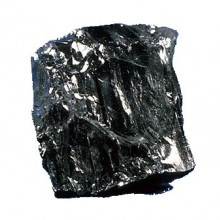
30:06 - Coal for Carbon Capture
Coal for Carbon Capture
with Professor Peter Styles, University of Keele
Helen - Now, we've heard about the biological techniques of capturing carbon. Now it's time to move onto the geological methods: starting with the use of disused coalmines. Something that we have plenty of here in the UK. We sent Meera down to London to find out more.
 Meera - While we're all worried about the increase in carbon dioxide in our atmosphere another worry is our source of energy for the future. The burning of fossil fuels which aren't renewable sources of energy means that as well as increasing the carbon dioxide in our atmosphere our energy sources are running out. In order try and kill two birds with one stone, Professor Peter Styles from the University of Keele has been looking into using un-mine-able coal seams to not only sequester CO2 but also enhance the release of methane from these seams. As coal absorbs CO2 twice as readily as methane, when CO2 is piped in the coal absorbs it readily and the methane is released. Therefore providing us with energy as well as preventing CO2 from entering our atmosphere. I spoke to Peter recently at a carbon capture event put on by the Institute of Physics at the Royal Society in London. I asked him about what his team had been looking into to capture carbon from our atmosphere and how they plan on going about it.
Meera - While we're all worried about the increase in carbon dioxide in our atmosphere another worry is our source of energy for the future. The burning of fossil fuels which aren't renewable sources of energy means that as well as increasing the carbon dioxide in our atmosphere our energy sources are running out. In order try and kill two birds with one stone, Professor Peter Styles from the University of Keele has been looking into using un-mine-able coal seams to not only sequester CO2 but also enhance the release of methane from these seams. As coal absorbs CO2 twice as readily as methane, when CO2 is piped in the coal absorbs it readily and the methane is released. Therefore providing us with energy as well as preventing CO2 from entering our atmosphere. I spoke to Peter recently at a carbon capture event put on by the Institute of Physics at the Royal Society in London. I asked him about what his team had been looking into to capture carbon from our atmosphere and how they plan on going about it.
Peter - We're particularly interested in coal as a repository. In a slightly different context in that we were looking at catastrophic failures in mines which emitted methane. That got me interested how much gas could be stored in coal. With CO2 it's the case that coal actually likes CO2. If you actually place CO2 close to coal it will start to absorb it and give you more methane. You can get a virtuous cycle of producing an energy source and then storing the by-products. That combination will deal with an energy issue and also deal with the CO2 sequestration issue which really attracts me. 30% of the UK is underlined by coal of one kind or another and even with our very long history of mining we've only removed a fraction of the coal. There is a tremendous amount of coal there which is accessible. If you go to China their main source is coal. If we can produce technology which will enable them to work more environmentally friendly then that would be a great contribution.
Meera - How would you actually get the CO2 down there in the first place in order to be absorbed by the coal?
Peter - You would usually do this in conjunction with processed coal bed methane. Coal bed methane you actually drill a hole - in the old days it would be a vertical bore-hole. Now it would be a vertical bore-hole with horizontal wells off it. It can cover from one single vertical hole a very large area underground. You will then pump water off initially and eventually reduce the pressure and the methane will come off. You can either have a separate bore hole in which you pump CO2 or you can do that for a while and then reverse it instead of extracting methane you start to pump CO2 back in. That will release more methane so I imagine some kind of cycling process where you actually alternate extraction of methane and injection of CO2.
Meera - If we were to do that and take it out of our atmosphere how long would that be able to help up for?
Peter - One thing about coal is that you'll store it permanently. If you've permanently locked it out because coal actually absorbs the CO2 into its structure. Most of the other sequestration methods are not intrinsically permanent. You're actually just putting the CO2 into the porosity of the rock. It is possible for it to escape. In most oil and gas which is ever produced we don't see it. It escapes into the environment. Coal is still there. It doesn't move very far. There's that permanence which is part of it as well as the volume.
Meera - Has this actually been tested anywhere yet?
Peter - Yes, there have been several experiments. The biggest one, potentially, was a collaboration between Canada and Western China where they increased the output of gas by 5-6 times than by what they did without the injection of CO2.
Meera - Of all the different processes available, what looks like the most promising one to reduce carbon dioxide in the atmosphere by the greatest percentage?
Peter - I'm trying to look at this as a combined cycle. I'm not just looking at sequestration. I'm trying to look at energy too. If you just look at sequestration then probably I would guess that enhanced oil recovery - pumping it in to old abandoned oil fields or depleted oil fields would be a very, very useful process. That would have been my guess because the technology for that is very mature. Fuel for the future will be coal and so we actually need to deal with that. Not just in the UK but globally because if we just continue burning coal and do nothing with the CO2 then we're going to all be in trouble.
Meera - So there you have it. Whilst we can't purely rely on hiding CO2 from our atmosphere these capture methods are buying us some time to come up with a new, clean source of energy for the future whilst trying to reduce our impact on the environment in the mean time.
How long should you turn off a fluorescent for?
In the old days the older technology meant that these lights did consume a lot of energy to start but once they were running they were more efficient. I think that the new technology with the new starters built into them they're much better but I don't know. If anyone has the answer to that question about the energy consumption and the starting costs of a fluorescent tube, a modern fluorescent tube I'd be very interested to know.
Is there any point in useing low energy bulbs and heating?
We put this question to Chris Vivian from CEFAS...
"I suspect that it's still better to have low energy bulbs. I'd guess because electricity's a very inefficient way of producing heat for space. There are better ways such as using gas and so on. I suspect it's a question of efficiency."
We agree with Chris on this one, but it would be interesting to get any numbers on that. If you've got any ideas on this then do let us know.
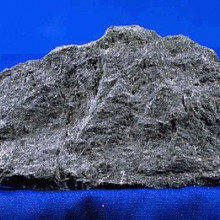
36:25 - Turning Carbon into Stone
Turning Carbon into Stone
with Dr Peter McGrail, Pacific Northwest National Laboratory
Chris - Now we heard about old coal mine being used as a place to dump our old CO2 but how about old volcanoes? Our next guest on is Peter McGrail and he's from the Pacific Northwest National Laboratory in Washington State and he's been looking at the carbon catching properties of flood basalt. That's a type of rock that's left over from when lava flowed out of volcanoes. Hello Peter...
Peter - Good evening.
Chris - Thank you for joining us so what's the basis to this technique? How does it work?
 Peter - Basically we would be looking at capturing CO2 from a stationary source like a coal-fired power plant and then injecting that CO2 deep underground (2000ft-3miles). That CO2 would then enter into a special structure in the continental flood basalt. You have to think of these things the way they were produced. There were these massive cracks that were in the Earth's structure and these massive lava flows extruded out of those massive cracks and extended out over many hundreds of miles. These individual folds would have been separated by hundreds of thousands or millions of years. What happens is that contacts between these individual flows there were cracks, crevices and bubbles that are present. This is where the porosity and permeability exists in these continental flood basalts for injections and movement of fluids including CO2.
Peter - Basically we would be looking at capturing CO2 from a stationary source like a coal-fired power plant and then injecting that CO2 deep underground (2000ft-3miles). That CO2 would then enter into a special structure in the continental flood basalt. You have to think of these things the way they were produced. There were these massive cracks that were in the Earth's structure and these massive lava flows extruded out of those massive cracks and extended out over many hundreds of miles. These individual folds would have been separated by hundreds of thousands or millions of years. What happens is that contacts between these individual flows there were cracks, crevices and bubbles that are present. This is where the porosity and permeability exists in these continental flood basalts for injections and movement of fluids including CO2.
Chris - So what would you do? Would you put the CO2 down as a gas or would you dissolve it into the water first and then pump the water through those holes in the lava?
Peter - It would go down the injection wells as a liquid. That liquid CO2 would then enter into the formation displacing the water that was present in the pore space and fracture spaces in those interflow zones. Eventually the water would then absorb the CO2. The thing that we found is quite intriguing about these flood basalts is that once the CO2 dissolves in the water we have a very rapid reaction that occurs between the CO2 saturated water and the basalt. CO2 gets converted back into a solid rock: calcium carbonate is the end product.
Chris - Quite literally it's turning the CO2 into stone.
Peter - Absolutely. With no additional energy input required of then getting the CO2 into the basalt formation.
Chris - Here's the killer question: does it work?
Peter - That's a question that we're attempting to answer through some pilot studies that we're just about ready to start. We plan to drill our first pilot well here in Eastern Washington State in March or early April this year. Then about the summer of 2008 we would be injecting 3000 tonnes of CO2 into this Columbia River basalt route, here in Washington State.
Chris - That sounds like a lot, 3000 tonnes but putting that in perspective that must be the output from a big, coal fired station over the course of a couple of hours?
Peter - Depending on size, yes that would be a few hours to maybe one shift in terms of CO2 production.
Chris - How are you going to trace where the CO2 goes once it's in the ground?
Peter - A variety of ways: monitoring techniques that we use. There are techniques that we extract fluid samples from depth and so looking at the change in water chemistry around the injection well. We also use what we call geophysical techniques so these are seismic techniques that allow us to look at an image of the CO2 in the subsurface.
Chris - Are there any possible negative effects to doing this?
Peter - One of the things that has to happen in any geological sequestration project is the containment of CO2 and so in these deep flood basalts one of the research areas that we want to investigate is whether the CO2 is staying in the place that we think it will. That is we don't want to have cracks, crevices and fractures that would allow that CO2 to migrate a significant distance vertically. Computer simulations don't suggest that's possible but of course they're just computer simulations. The fieldwork is critical to proving what we're seeing in our computer models.
Chris - Finally, how much CO2 do you think the world realistically could lock away in this way, assuming you're successful?
Peter - Well, one of the things we've done is taken advantage of geological data. The department of energy in Washington State has spent almost a 1/2 billion dollars characterising the Columbia River basalts here. That information database has been extremely valuable to allow us to continue to compute these numbers. What we see is that conservative estimates would be about 20 gigatons to 50 gigatons of CO2 capacity in just the Columbia basalt rift which, in perspective what that means is about 10-20 years of all the CO2 emissions from all the coal fired power plants in the United States. The capacity is actually quite significant.
Chris - Well, we wish you luck and I guess we'll be talking to you in a year or so to see if it worked.
Peter - I'll be happy to join you again!
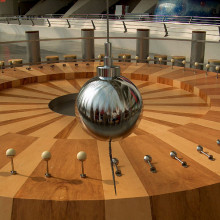
42:33 - Rising Stars - Alternative Universes
Rising Stars - Alternative Universes
with Andrew Pontzen
This week's Rising Star is physicist Andrew Pontzen...
If you've heard a recent video or television discussion about cosmology you might have heard mentioned that we live around the sun: a single star in a galaxy of 100,000,000,000,000; that a galaxy in turn is just one of billions of other galaxies visible to us and that the vast spaces between these galaxies are constantly expanding. You may also have heard that to fully explain measurements of all this we need to invoke little understood and mysterious ideas like dark matter and dark energy. Most cosmologists work on ideas like these which is understandable given how much there is still to comprehend but to introduce you to my own research we need to gloss over these problems and think about things differently.
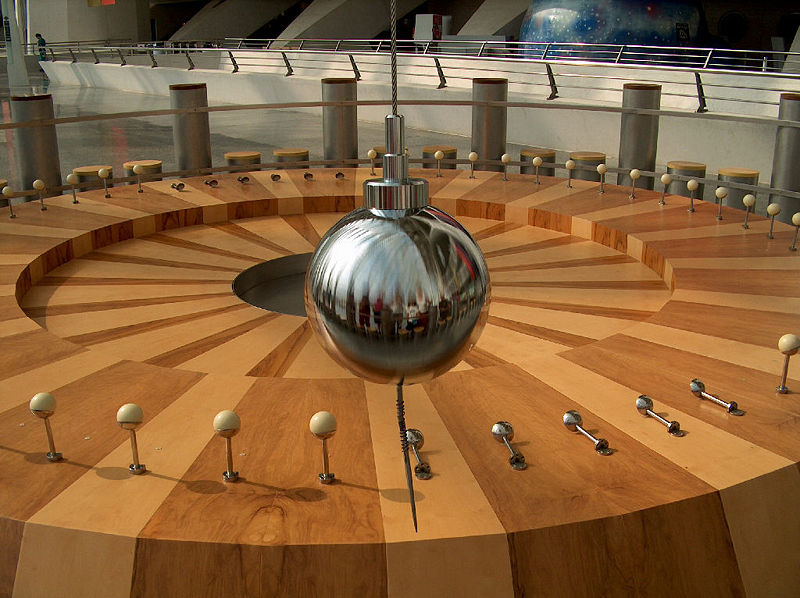 It's often pointed out that if the laws of physics differed in the most minute way we, as humans, simply couldn't exist. But even give a certain set of physical laws our existence in the universe is only assured by the initial conditions. Let me explain what I mean by that. Let's say you have a pendulum. If you pull back the bob a long distance and then let go it's going to swing back and forth. On the other hand if you carefully put the bob right in the centre of the swing and then let go it just sits there, stationary. It's the same physical system but we see a different behaviour depending on how you start it. The entire universe is similar. It seems possible for it to start in different ways and only if it starts the right way does it produce life like humans later on.
It's often pointed out that if the laws of physics differed in the most minute way we, as humans, simply couldn't exist. But even give a certain set of physical laws our existence in the universe is only assured by the initial conditions. Let me explain what I mean by that. Let's say you have a pendulum. If you pull back the bob a long distance and then let go it's going to swing back and forth. On the other hand if you carefully put the bob right in the centre of the swing and then let go it just sits there, stationary. It's the same physical system but we see a different behaviour depending on how you start it. The entire universe is similar. It seems possible for it to start in different ways and only if it starts the right way does it produce life like humans later on.
As it turns out this means that shortly after the beginning of time the universe has to be highly uniform. One part has to look much like any other except for tiny ripples which eventually grow into galaxies. But what would have made it look like that and what dictates exactly how big those ripples are and what form they take? These are questions to which there are no known definite answers, only possible explanations which themselves are riddled with further difficulties. My own current work looks at types of ripples that might not be ruled out in all of these possible theories. We know from observations these ripples were not present. So I'm working on universes which are never going to agree with what we actually see. The idea is that this may shed light on why the universe is like it is and isn't like it isn't. It's a small part of a large jigsaw but in optimistic moments I hope it will help us fit other pieces around it.
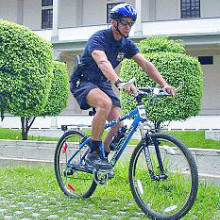
45:36 - Fatter Cyclists Faster Downhill?
Fatter Cyclists Faster Downhill?
This question was answered by Dr Jos Darling, Dept Engineering, University of Bath.
That's a tricky one. It's been thought about for a long time really because Aristotle was the first bloke that thought about objects falling due to gravity. At that time he decided that heavy object fell more quickly than light objects. Later on, people like Newton decided that, with gravity, objects fall at the same rate. Strictly speaking that's only true if you're in a vacuum. On a bike you're far from it. The big issue with the bike is the aerodynamic drag.
If there were no aerodynamic drag then a fat person or a thin person would end up accelerating down a hill at the same rate. The point is that, with the fat person, assuming that they're not incredibly wide, the aerodynamic drag is going to be less significant in terms of their falling down the hill than for the thin person. Ultimately, a thin person's going to end up going slower than a fat person.
So, if you're in a race, you want to minimise that aerodynamic drag! And of course the downside to being fat is that there's always going to be a hill on the other side of the downhill, meaning that you've got to put a lot of work in to get up the other side. There's always a catch!
How many watts is a burning candle?
We put this question on our forum and got an answer from Bored Chemist. You can read his answer as part of the Naked Scientists' Wet & Wild Show.
Would hyrodgen powered cars help the environment?
We put this question to Chris Vivian from CEFAS...
First of all the hydrogen itself will come from splitting of water, using energy. So the net effect for the hydrological cycle will be close to zero. The more important aspect is how much energy you're going to use to generate hydrogen itself and how that is generated.So if you had, say wind power or nuclear power generating it so there's no net carbon gain for taking the hydrogen out of water.You may change where things are happening in the hydrological cycle but the net effect should be zero I would have thought.
Do fish always swim anticlockwise in a round bowl?
Helen - I've never heard about fish going in one single direction in a fish tank so I think we're going to need some more data to back that up. Fish can navigate, they do know where they're going. Why they'd swim in only one direction, I have no idea. I can imagine they'd keep going round and round one but they can't in the square one because there's corners.Chris - It's also a myth that they'd lose their memory in 5 seconds, isn't it?Helen - Absolutely, fish are much cleverer. They have much longer memories than 7 seconds. Anyone else got any fish in their tanks, want to let us know what they're doing?
We also received an answer from Izzy during the Naked Scientists Wet and Wild Show.
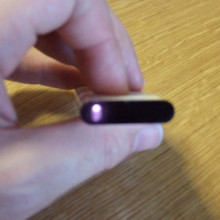









Comments
Add a comment